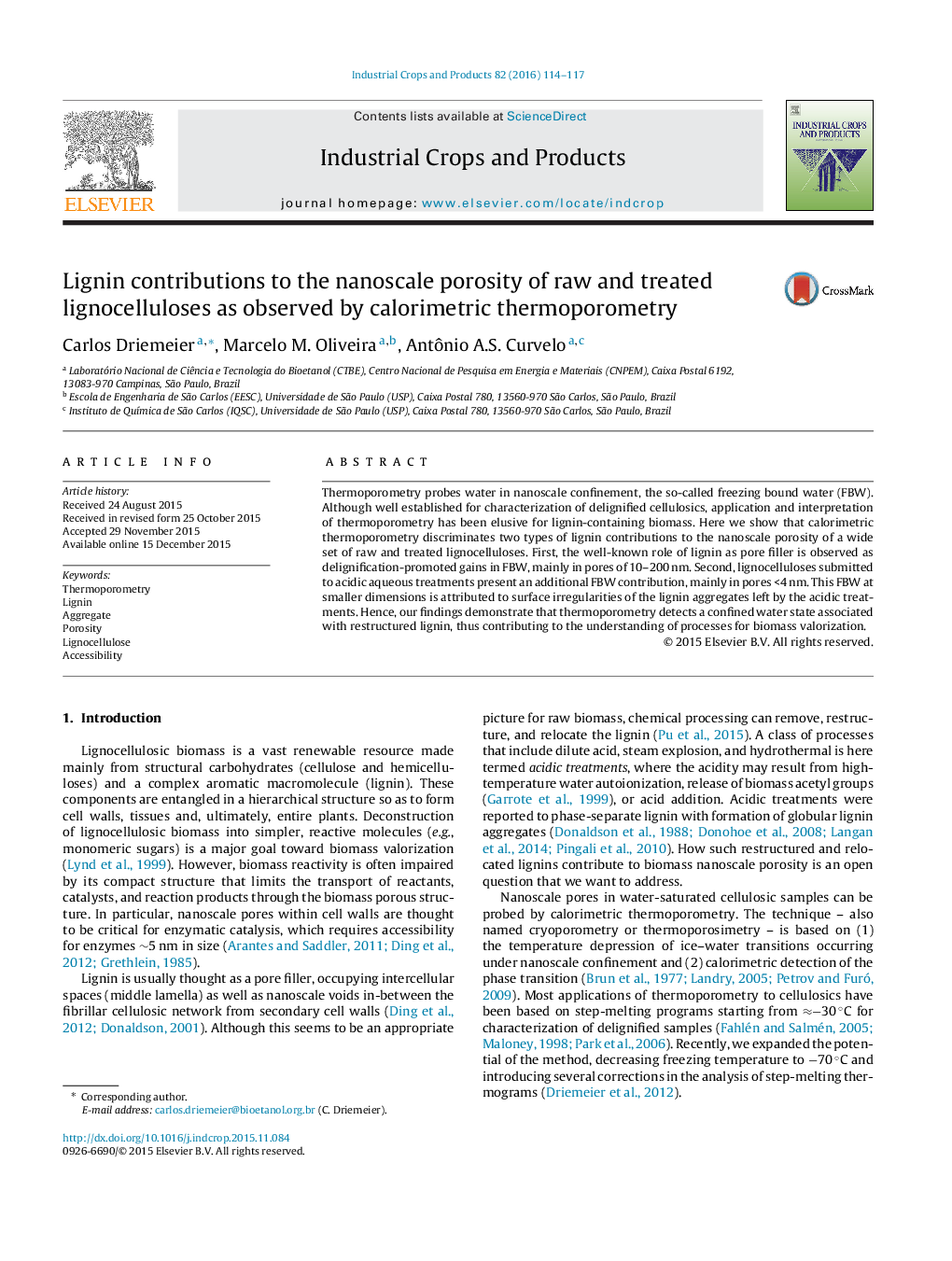| Article ID | Journal | Published Year | Pages | File Type |
|---|---|---|---|---|
| 4512219 | Industrial Crops and Products | 2016 | 4 Pages |
•Calorimetric thermoporometry probes nanoscale pores in lignocellulosic biomass.•Delignification increases porosity mainly in the 10–200 nm range.•Pores <4 nm attributed to lignin aggregates left by acidic treatments.
Thermoporometry probes water in nanoscale confinement, the so-called freezing bound water (FBW). Although well established for characterization of delignified cellulosics, application and interpretation of thermoporometry has been elusive for lignin-containing biomass. Here we show that calorimetric thermoporometry discriminates two types of lignin contributions to the nanoscale porosity of a wide set of raw and treated lignocelluloses. First, the well-known role of lignin as pore filler is observed as delignification-promoted gains in FBW, mainly in pores of 10–200 nm. Second, lignocelluloses submitted to acidic aqueous treatments present an additional FBW contribution, mainly in pores <4 nm. This FBW at smaller dimensions is attributed to surface irregularities of the lignin aggregates left by the acidic treatments. Hence, our findings demonstrate that thermoporometry detects a confined water state associated with restructured lignin, thus contributing to the understanding of processes for biomass valorization.
